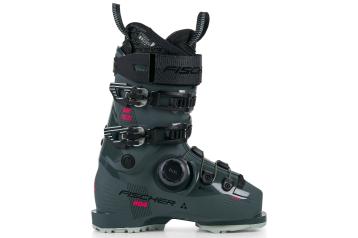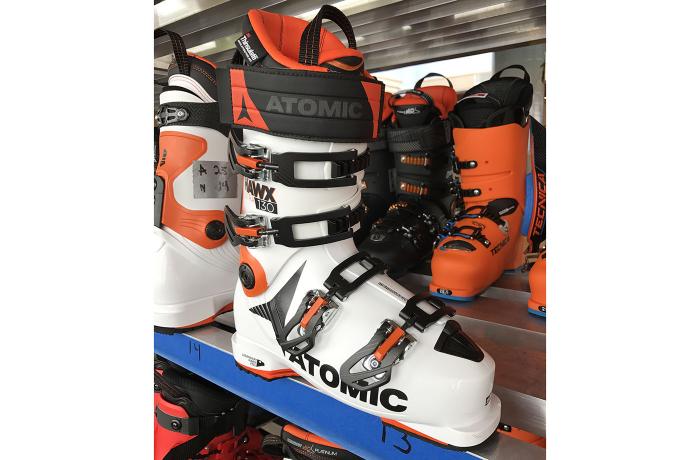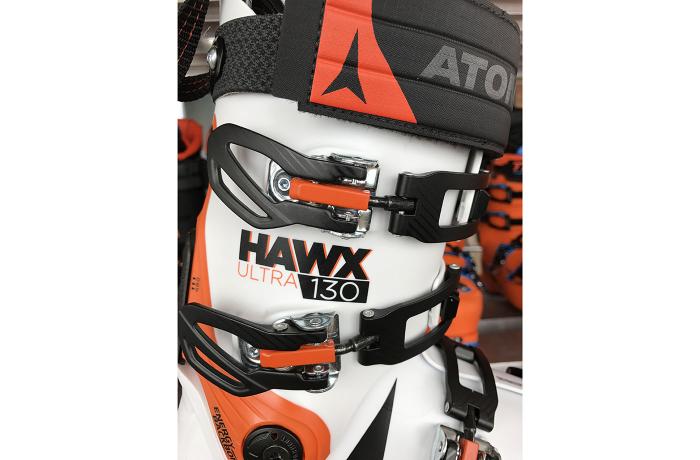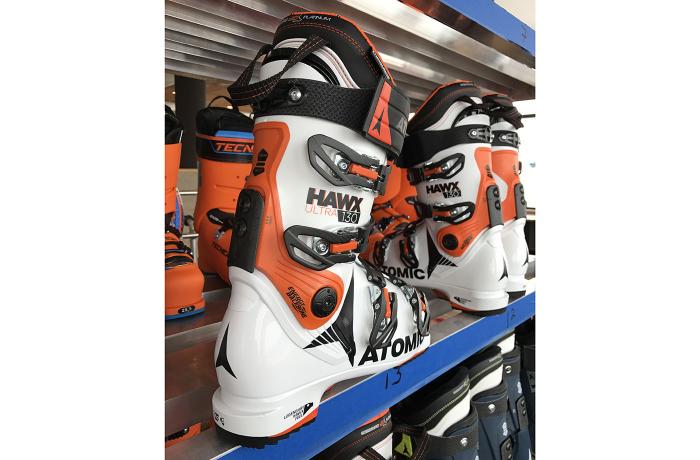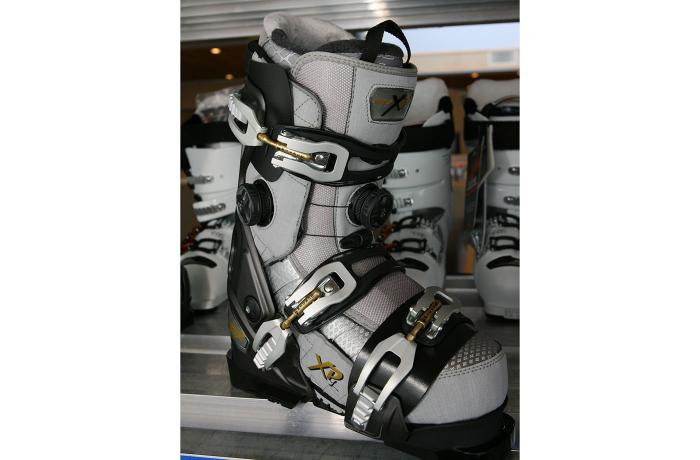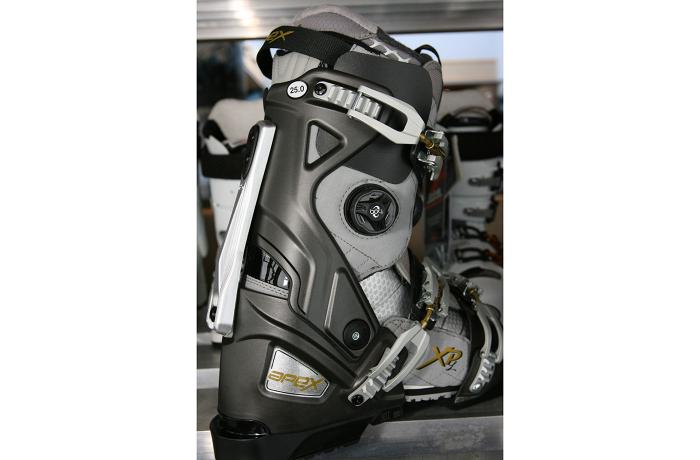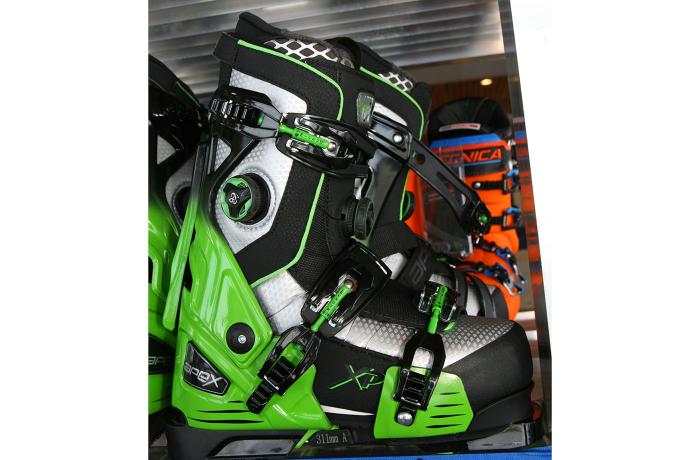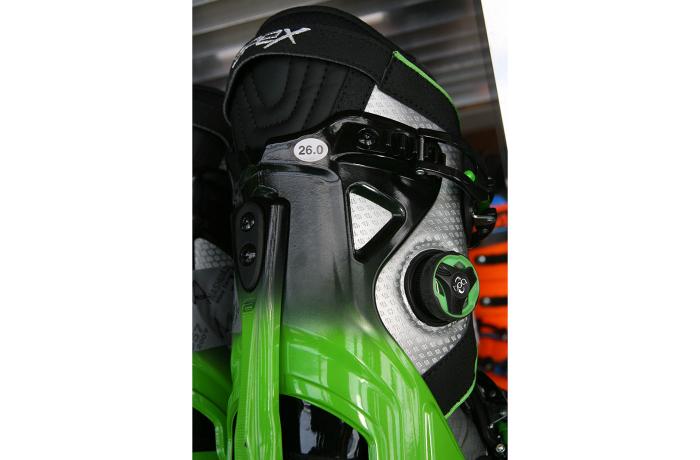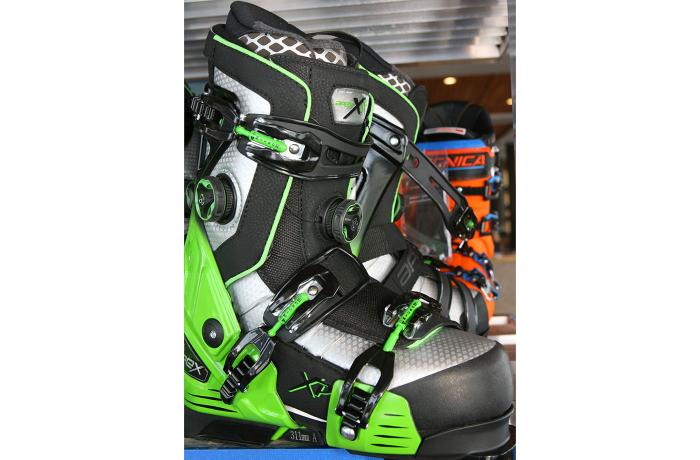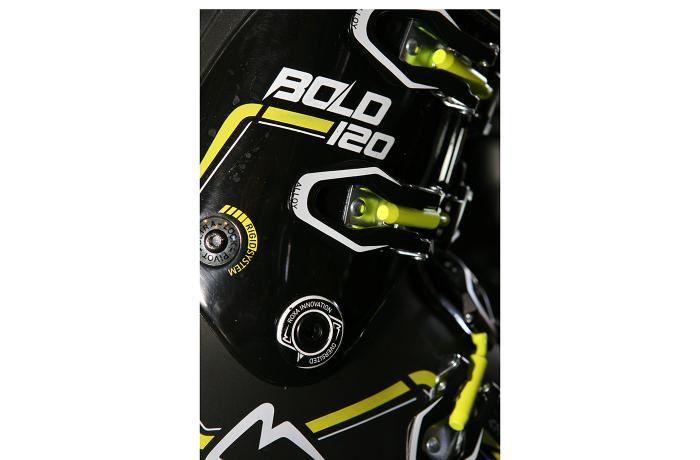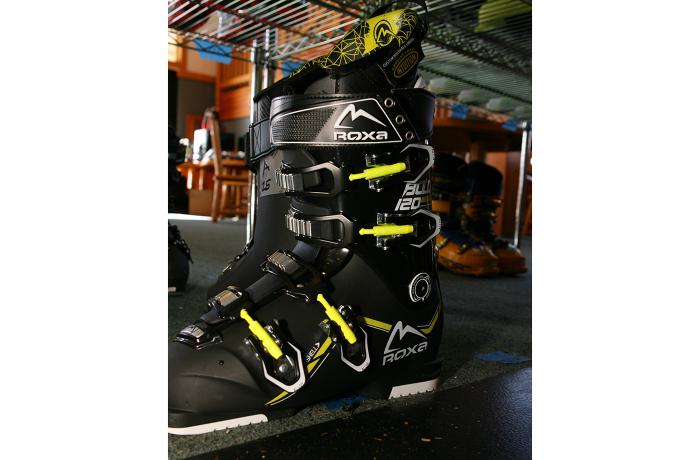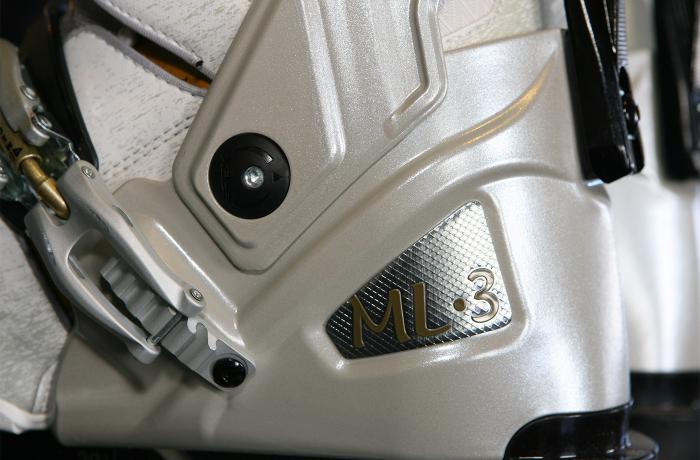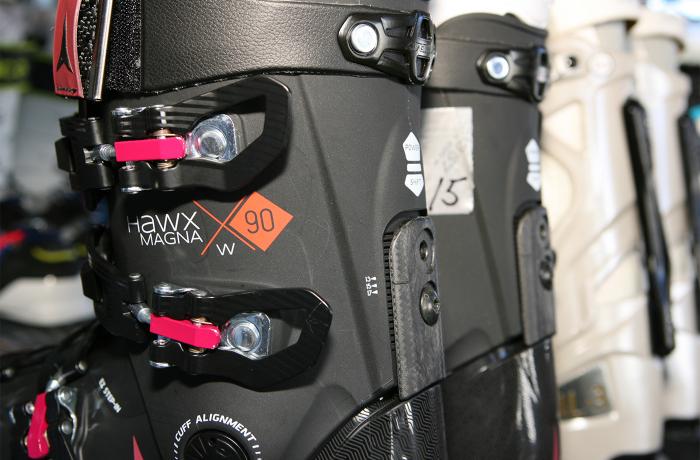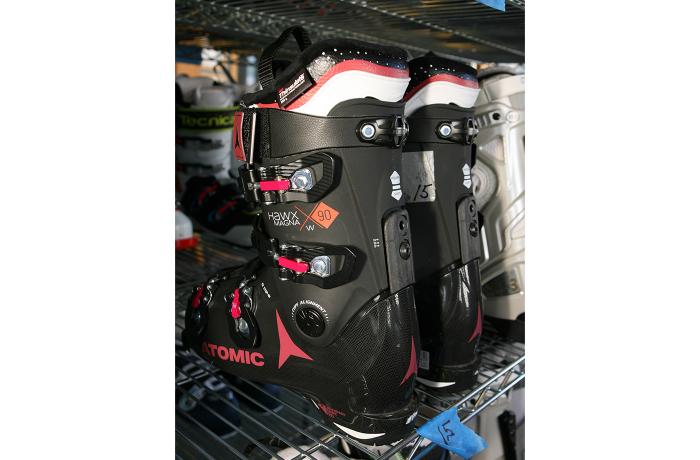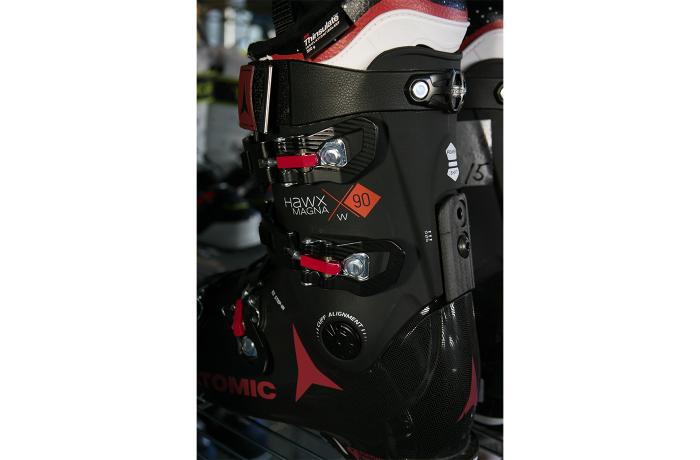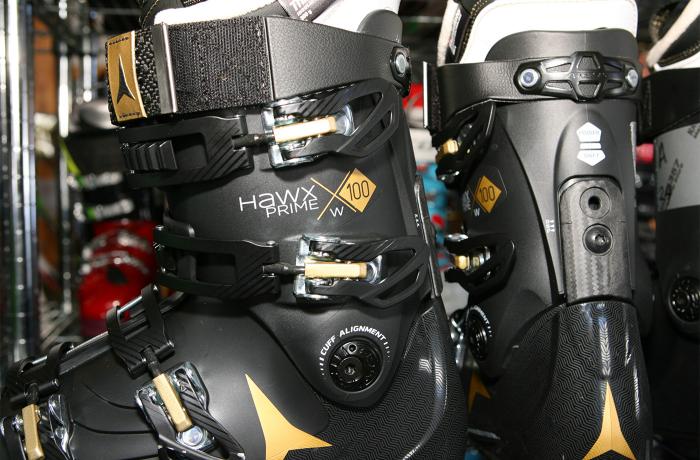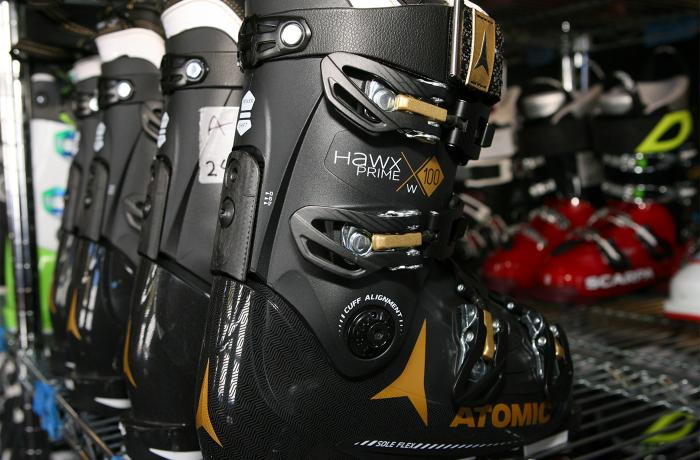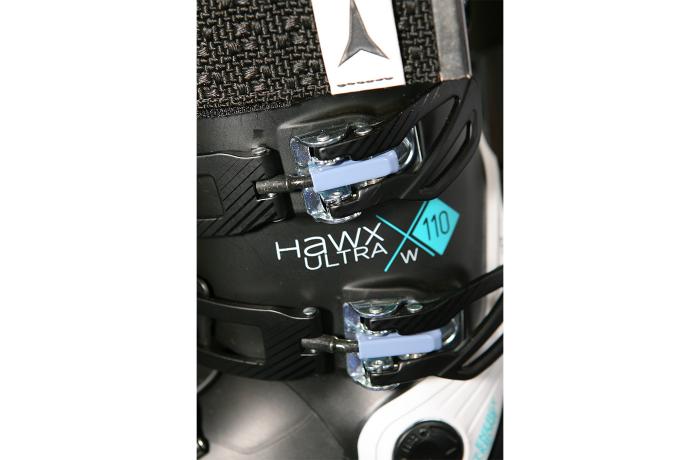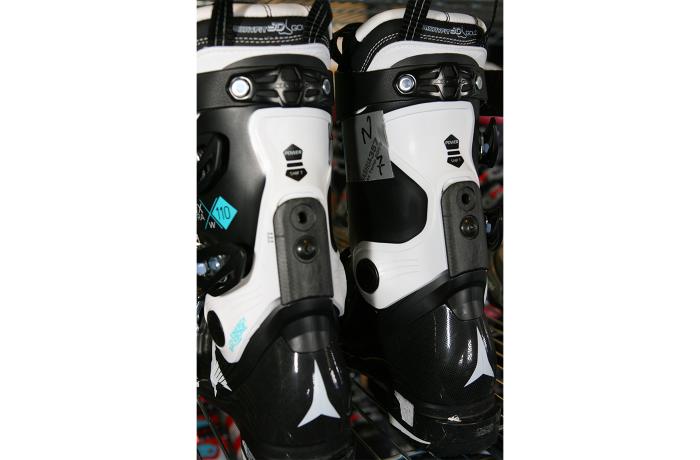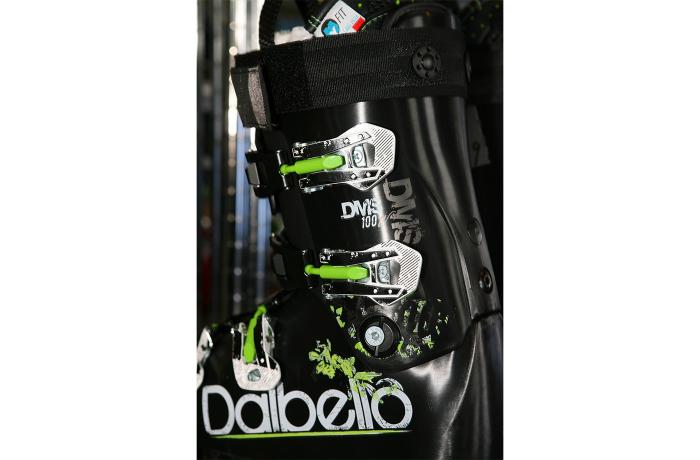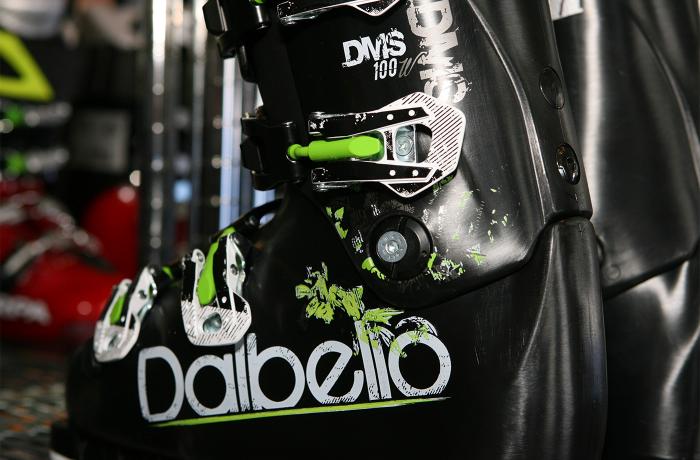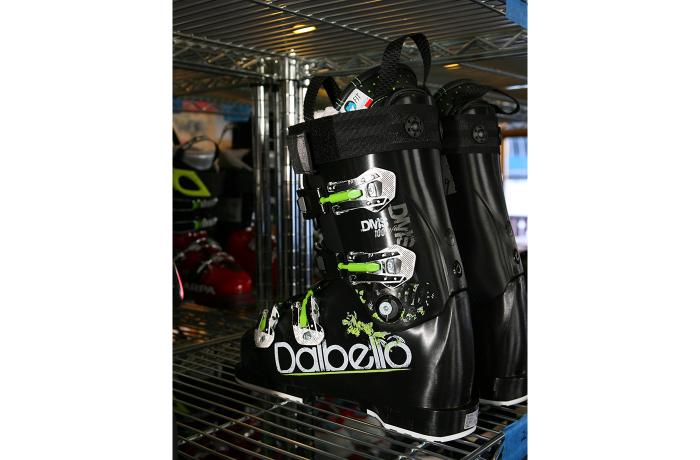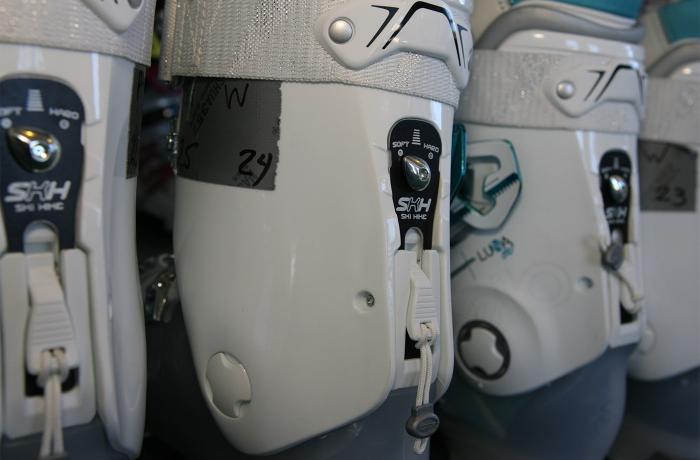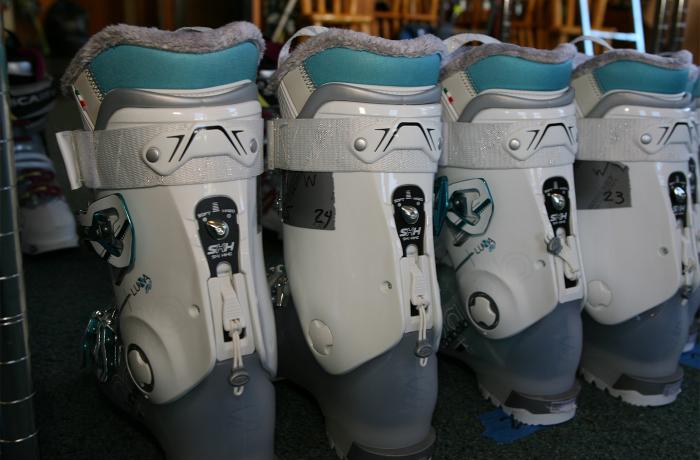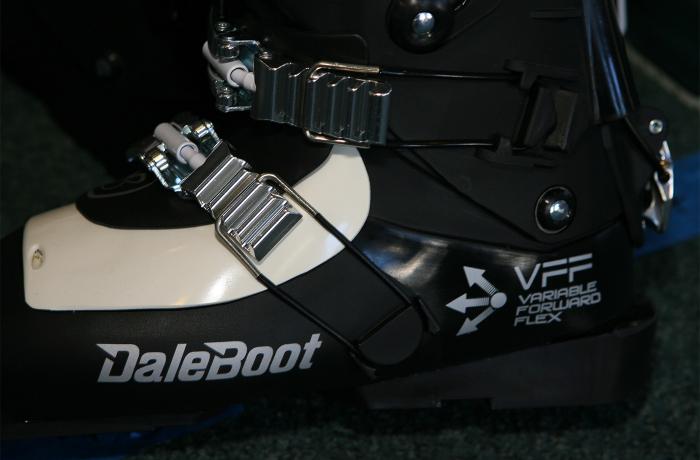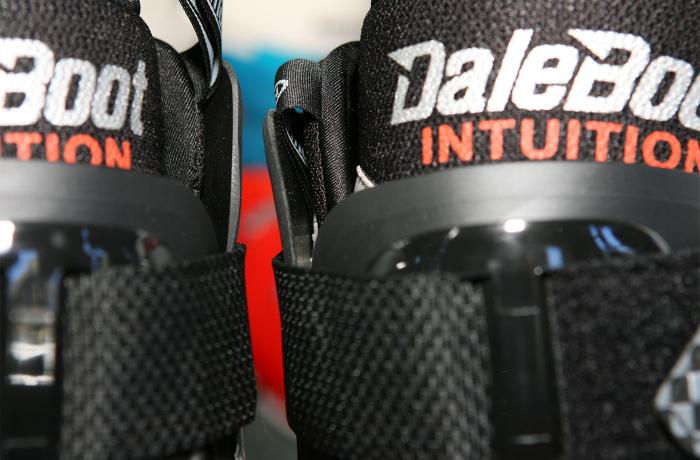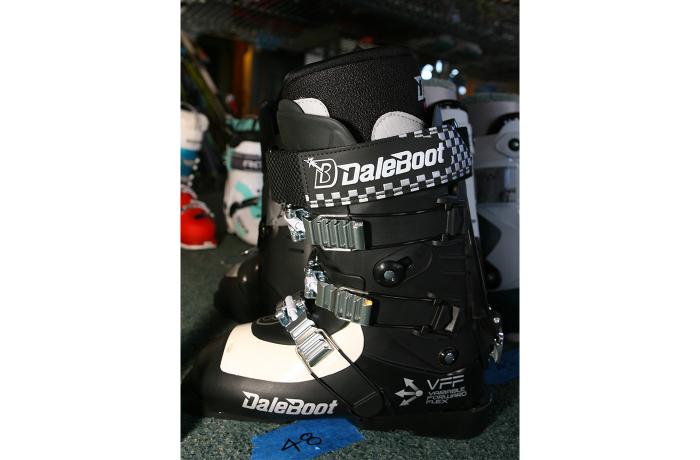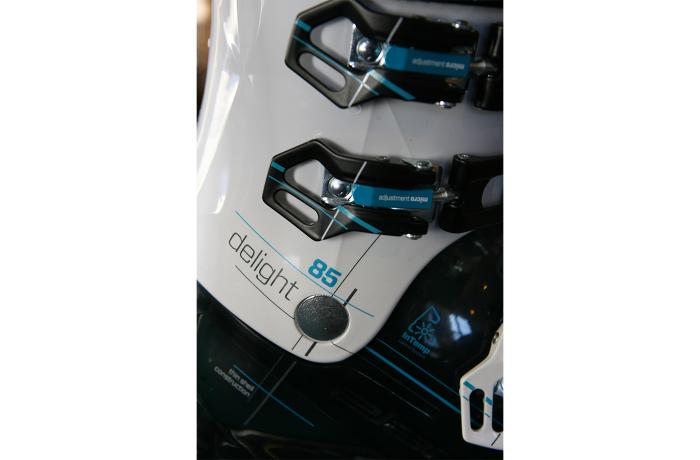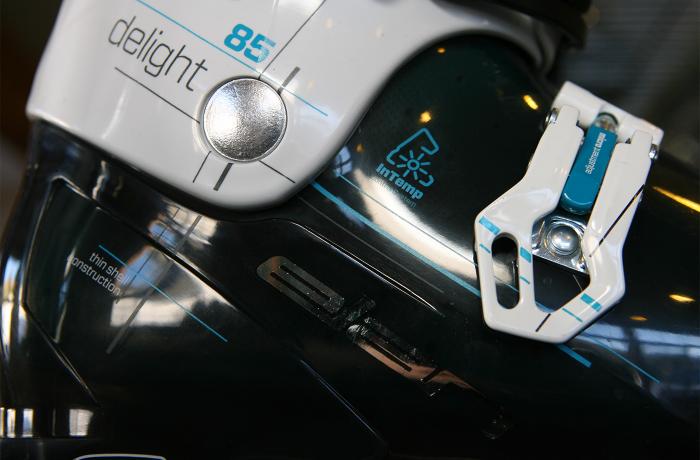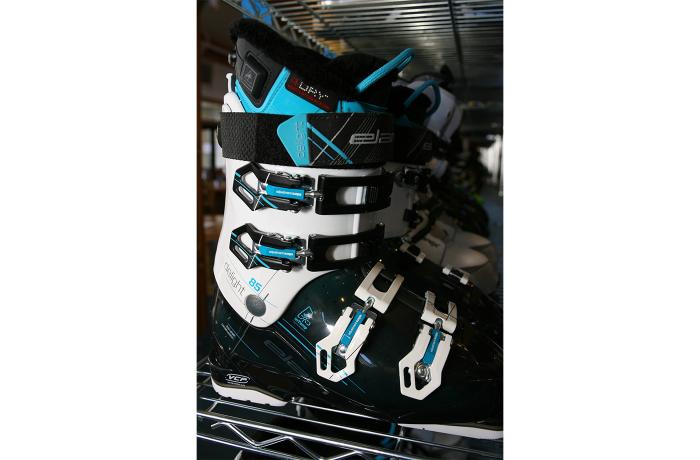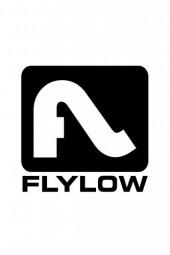The Gist
In its sophomore year the 2018 Atomic Hawx Ultra 130 reminded testers why it was a favorite last year too—so light and so snug, with surprising toe room for such a compact package. Super-charged power and snap characterized this unique all-mountain narrow's on-snow M.O.
The Fit
The boot sole length (BSL) of the Hawx Ultra 130 is shorter by 5 mm than average and yet it fit as roomy in length as the rest of the group and might even sport a little extra width for the toes than most narrows. The Hawx Ultra Progressive Shell design leaves plastic thick where needed for support and stability but thins it out where better wrapping is required—this reduces weight and opens up some bonus interior room. Incorporated with the thin and feely Memory Fit 3D Platinum liner the Hawx Ultra 130 provides a locked-down fit from the midfoot to heel and up through the cuff while maintaining an open toebox. The feel against the leg was a little tall with an elasticized flex feel that gripped the calf firmly but without a pinch, testers said. Several testers mentioned that it's not the easiest on and off.
Performance
That snappy flex feel that testers noticed indoors translated to rapid-fire edging moves and loaded-up, slingshot-style, rebounding transitions on snow. The thin-walled Grilamid cuff wraps the leg shaft and gives a skier two joy-sticks for driving skis in all directions with no-delay transmission of movement. On first feel, the thin, springy cuff gave testers cause for power concern, but no such trouble existed with the Hawx Ultra 130—it put skis of all widths on a rail and drilled turns at all speeds in all terrain. A few bigger, taller guys said they could over-power the cuff during Flintstonian flexing, but generally it held up to normal all-mountain abuse. The Grilamid cuff and thinned-out polyurethane lower boot gives the boot a noticeably light feel, which combined with the snug fit translated into serious agility, testers agreed.
Cool Features
The Memory Fit shell molding feature allows a skier to oven-cook the boot, wear it for a couple minutes, cool it down and enjoy a more personalized fit. Most of our testers liked the out-of-box fit just fine, however. The Hawx Ultra 130 also comes with slate of handy stance-alignment options, from lateral cuff
